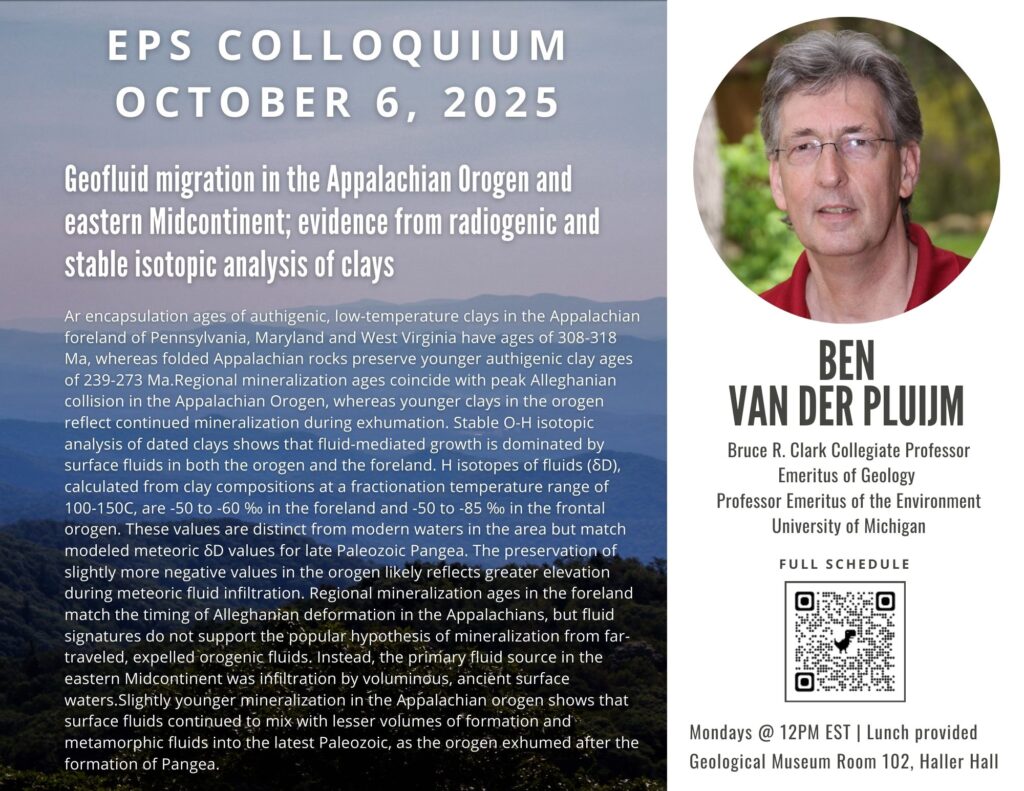EPS Colloquium – Ben van der Pluijm, University of Michigan
Geofluid migration in the Appalachian Orogen and eastern Midcontinent; evidence from radiogenic and stable isotopic analysis of clays
Ar encapsulation ages of authigenic, low-temperature clays in the Appalachian foreland of Pennsylvania, Maryland and West Virginia have ages of 308-318 Ma, whereas folded Appalachian rocks preserve younger authigenic clay ages of 239-273 Ma. Regional mineralization ages coincide with peak Alleghanian collision in the Appalachian Orogen, whereas younger clays in the orogen reflect continued mineralization during exhumation.
Stable O-H isotopic analysis of dated clays shows that fluid-mediated growth is dominated by surface fluids in both the orogen and the foreland. H isotopes of fluids (δD), calculated from clay compositions at a fractionation temperature range of 100-150C, are -50 to -60 ‰ in the foreland and -50 to -85 ‰ in the frontal orogen. These values are distinct from modern waters in the area but match modeled meteoric δD values for late Paleozoic Pangea. The preservation of slightly more negative values in the orogen likely reflects greater elevation during meteoric fluid infiltration.
Regional mineralization ages in the foreland match the timing of Alleghanian deformation in the Appalachians, but fluid signatures do not support the popular hypothesis of mineralization from far-traveled, expelled orogenic fluids. Instead, the primary fluid source in the eastern Midcontinent was infiltration by voluminous, ancient surface waters. Slightly younger mineralization in the Appalachian orogen shows that surface fluids continued to mix with lesser volumes of formation and metamorphic fluids into the latest Paleozoic, as the orogen exhumed after the formation of Pangea.
To be added to the EPS colloquium mailing list, please contact Caroline Carr at carolinecarr@fas.harvard.edu


